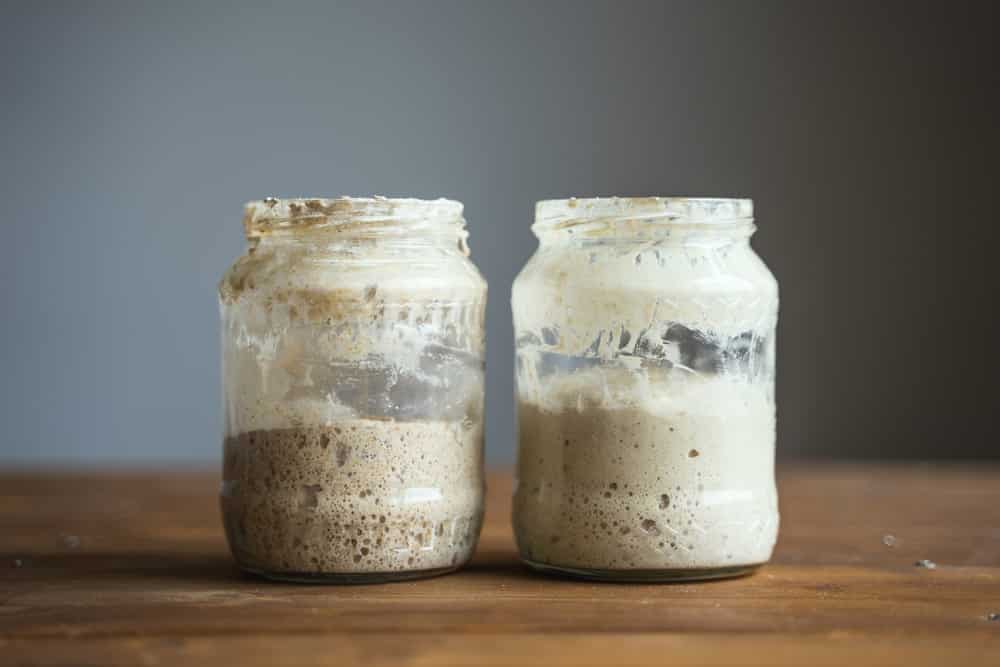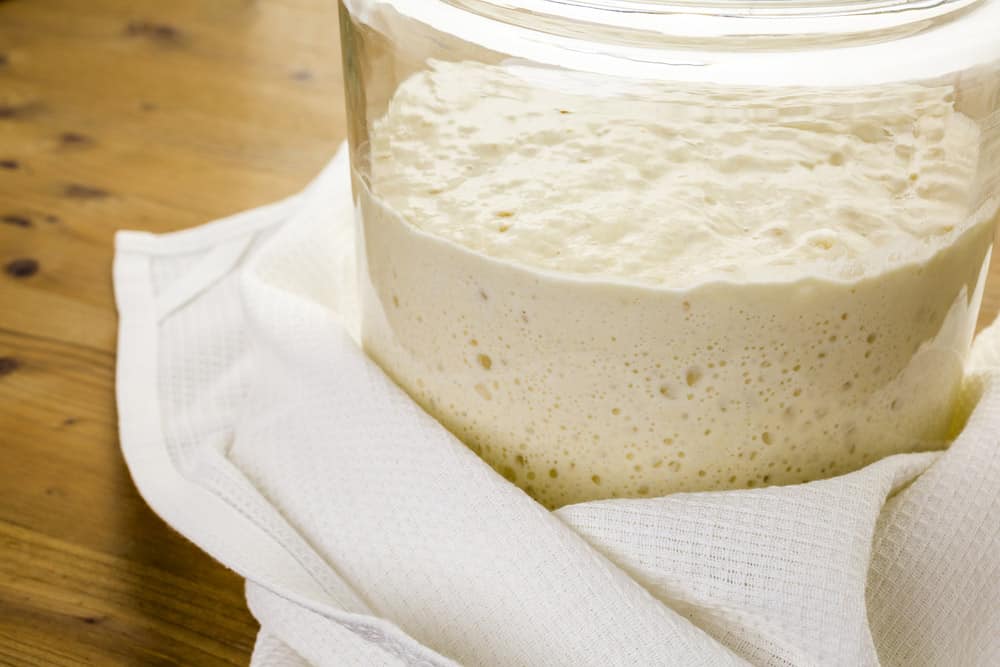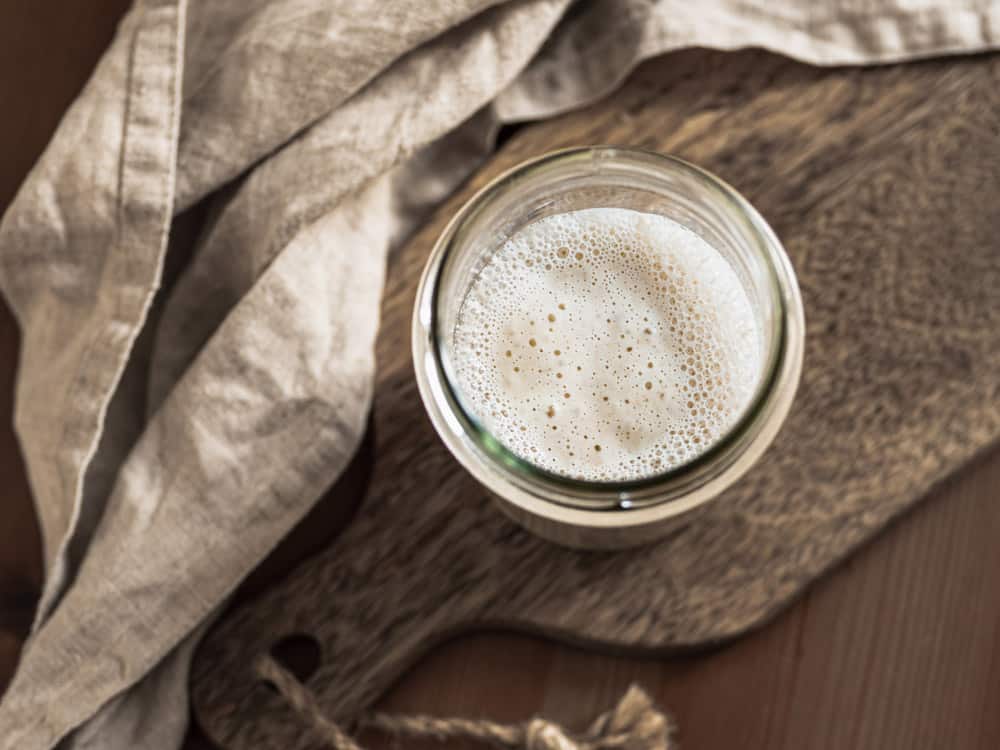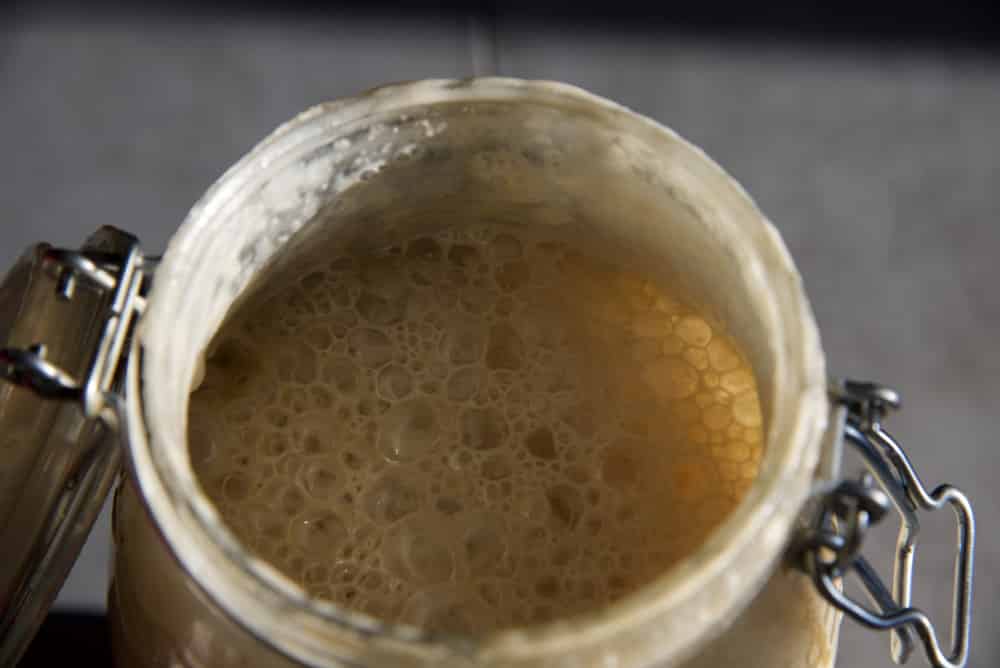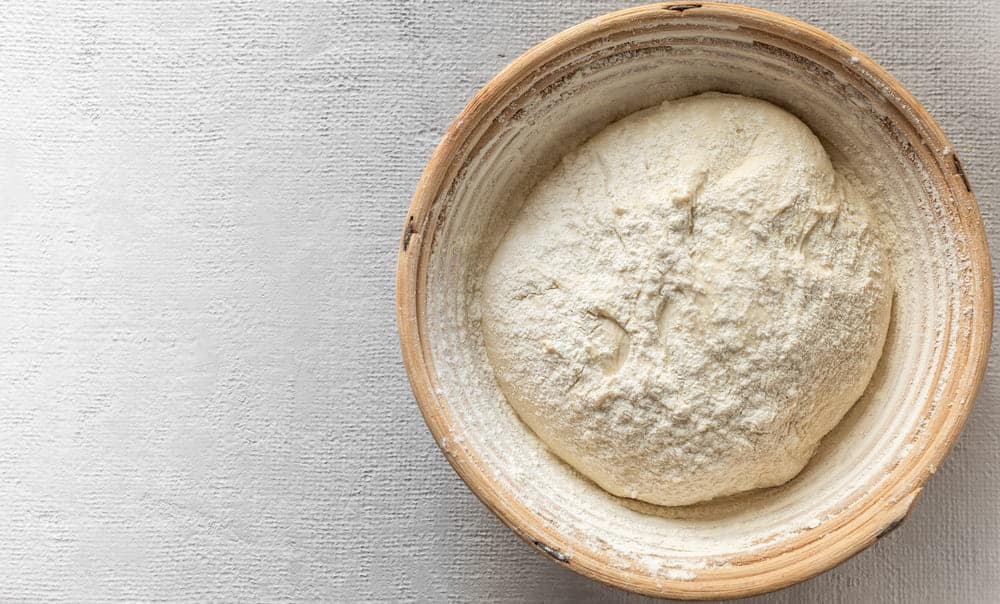
Sourdough is a naturally leavened (raised) bread. This means that it contains no commercial yeast to help it rise but rather relies on a starter. This starter is a fermented dough mixture that contains wild yeast from the air and beneficial bacteria.
These give it the tangy taste and chewy texture that sourdough bread is renowned for. People like it also because it contains no artificial additives.
How is sourdough made?
This bread is made with a few very simple ingredients – flour, water, and a little salt. Various types of flour can be used, but a good basic one is strong white bread flour. The water can be ordinary tap water – there’s no need to buy mineral water.
Any salt is good as long as it is finely ground. That’s it! The secret, free ingredients are those wild yeasts and bacteria that you’ll be wanting in your starter dough.
Making a sourdough starter
The starter will take around 5 days or more to be ready. You’ll need 250 g strong white bread flour.
- Mix 50 g of it with 50 g of lukewarm water in a jar or plastic container.
- Leave it uncovered at room temperature for twenty-four hours.
- On the second day, mix another 50 g of flour and water and incorporate it into the previous day’s batch. Leave as before for 24 hours.
- On the third day, do the same again.
- On the fourth day, your starter should have some bubbles. Mix more flour and water and add it to the batch.
- On the fifth day, the mixture should be bubbling actively and smelling like yogurt. If not, keep feeding it as before for another day or so. At this active stage, it is now a starter and ready to make bread. You can store it in the fridge where it will remain dormant.
- Twenty-four hours before you want to use it for bread, pour off half of it and feed it with a mix of 100 g flour and 100g water. Leave it out of the fridge until it becomes active again. You can test if it’s ready to use by dropping a teaspoonful into some warm water – it should float.
This is the basic method for making a sourdough starter. However, the starter bubbling but not rising in its jar causing the bread to rise is a common problem. In this article, we share more about this issue and what can be done to fix it.
Sourdough Starter Is Bubbling but Not Rising
If the starter is already actively bubbling and rising in the jar, it’s considered ready to use. This activation might take a week or longer.
If the sourdough starter is just starting and bubbling but it’s not rising enough, it’s best that you throw half of it out and then feed the leftover portion again.
If you don’t want to throw it out, you can add it to regular bread dough made with commercial yeast to improve the flavor.
Reasons for bubbling but not rising
- This problem may occur with people who feed the starter at night. It may then rise and be very active during the night, fall back, and not be seen in the morning because it has settled down again. We recommend feeding the starter in the morning so that you can check the rising.
- The temperature may be a problem. Sourdough starters love warm environments so if you place yours in a warm spot, the fermenting and rising time will be quicker. This can be a challenge in winter or if you live in a cold climate. The ideal temperature range is between 75- and 85-degrees Fahrenheit. Some options are a warm kitchen cupboard next to the stove, wrapped up on a heating pad, or a special proofing box. Remember to use warm (not hot) water for the feeding mixture.
- The quality of the ingredients can affect the rising. Be sure to use fresh, high-quality unbleached flour with no chemicals added. While tap water is usually fine, yours may have a high chemical or mineral load in which case your starter may do better with bottled or filtered water.
- The problem may be caused by the starter being covered too tightly. It needs to be open to the air so that natural yeasts can fall in.
- Feeding frequencies are the last factor to consider when the sourdough starter won’t rise even after bubbling. For this purpose, we suggest that you increase the feedings amount or increase the feeding frequency because it can enhance the development of yeast.
We hope this has helped you with your sourdough starter issue. Remember, in general, the activity should increase every day. You need to wait until the starter is active enough to rise up in the jar before you use it. Be patient – this can take over a week.
As long as no mold forms on it, it’s fine.
